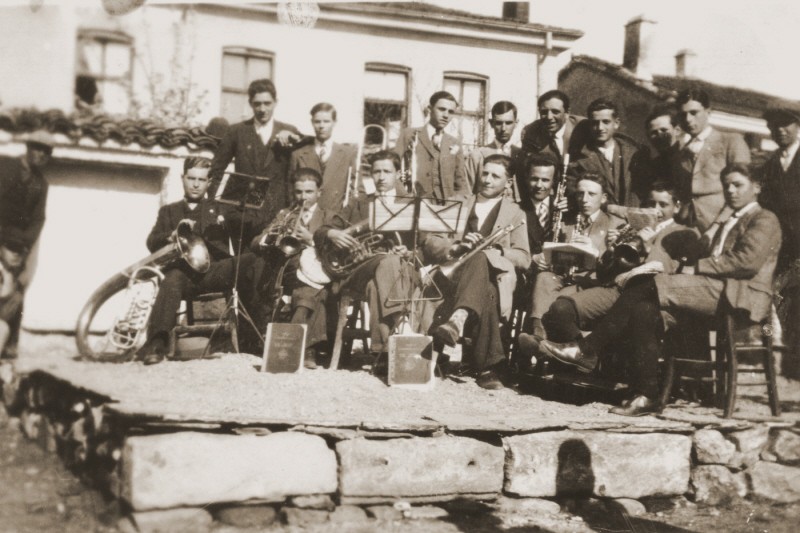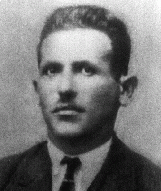
Yugoslavia
The Yugoslav Union
Formed in 1918, the Yugoslav Union encompassed Slovenia (the former Austrian provinces of Karniola and Krain) in the northwest, the former Hungarian crown land of Croatia, Serbia—including the former Hungarian Voivodina (which in turn consisted of the Backa, Baranja, and the Serbian Banat), the former Turkish provinces of Bosnia-Herzegovina and Macedonia, the former independent mountain kingdom of Montenegro, and the former Turkish provinces of Kosovo and Metohija on the Albanian border. Dalmatia, on the Adriatic coastline, was divided between Slovenia and Croatia.
Straddling the historical cross-roads between Roman Catholicism and Eastern Orthodoxy, between the early modern Christian and Muslim worlds, and subject to the migration of the south Slav peoples, German colonization, and Magyar (Hungarian) and Turkish conquest, the population of the Yugoslav Union was perhaps more diverse than that of any other European country during the interwar period.
Background
From the Turkish conquest of the Balkans in the 14th and 15th centuries until the late 19th Century most of the lands of the interwar Yugoslav Union were under Ottoman Turkish rule. Only Slovenia, which had been a part of the Austrian Empire, and the mountain kingdom of Montenegro which had successfully resisted the Turks, had had no experience of Turkish rule. Part of Hungary since the 11th Century, Croatia was absorbed with Hungary into the Habsburg Empire when the Habsburgs ascended to the Hungarian throne in 1526. Both were conquered temporarily by the Turks. By the end of the 18th Century, Habsburg Austria had liberated Croatia and Hungary from the Turks and absorbed Dalmatia and the Voivodina.
After the battle of Kosovo in 1389 demolished the army of the medieval Orthodox Serb kingdom, Ottoman Turkey ruled Serbia and Bosnia-Herzegovina until 1878. Austria-Hungary occupied Bosnia-Herzegovina in 1878 and annexed it in 1908. Macedonia and Kosovo-Metohija remained under Ottoman rule until annexed by Serbia after the first Balkan War in 1912-1913.
The conflict between Serbia and Austria-Hungary over Bosnia-Herzegovina provided the spark that ignited World War I. With the dissolution of the Habsburg Empire at the end of World War I in 1918, the Serb army occupied most of what became Yugoslavia. Fearing Hungarian and Italian territorial ambitions, Croat, Slovene, and Bosniak leaders agreed to the establishment of a South Slav Union under the rule of the Serb monarch, King Alexander Karadjordjevic, without having developed a supra-ethnic consensus as to how the union would work.
Population
Inhabited primarily by Catholic Slovenes, a south Slav people, Slovenia had German (themselves divided between Catholics and Lutherans) and Italian minorities. In Croatia, the south Slav and primarily Catholic Croats were the most numerous ethnic group, living with a significant, economically and culturally diverse Orthodox Serb minority as well as ethnic German and Italian minorities, both of which were primarily Catholic. The Voivodina had no preeminent ethnic group: Orthodox Serbs, Germans (primarily Catholic but with a Lutheran minority), and Hungarians (Catholic, Lutheran, and Calvinist) lived there in roughly equal numbers. Many smaller ethnic groups lived in the Voivodina as well: Romanians (primarily Orthodox), Ukrainians (Orthodox or Uniate), Czechs, Slovaks, and Croats (primarily Catholic). The most numerous, prosperous, and influential ethnic group in Bosnia-Herzegovina were the so-called Bosniaks. A south Slavic people, who differed little in language and ethnic heritage from Croats and Serbs, the Bosniaks adhered to the Muslim faith, their ancestors having converted in the wake of the Turkish conquest. A significant Catholic Croat minority lived in Herzegovina; while a significant Serb Orthodox minority lived in Bosnia. In Macedonia lived Macedonians, a south Slavic people (primarily Orthodox), speaking a language most closely related to Bulgarian, among substantial Serb, Greek, and Albanian minorities, with a sprinkling of Romanians, Bulgarians, and Vlachs, a mountain people speaking a language most closely related to Romanian.
Serbia was inhabited by an overwhelming Serb majority (primarily Orthodox). Due to its experience with independence, and in particular based on its strong military tradition, Serbia and Serbs provided the Yugoslav Union with a plurality of civil servants and military officers and dominated the federal government, often to the dismay of the other peoples in Yugoslavia. The Montenegrins were closely related to the Serbs in language, religion, and culture, including military tradition. Many Montenegrins considered themselves “pure” Serbs; along Montenegro's short coastline lived Albanian and Italian minorities. Finally, Kosovo-Metohija contained an Albanian Muslim majority, but was home as well to Albanian Catholics, Orthodox Serbs and Macedonians, and Orthodox Greeks.
Scattered throughout the Yugoslav Union were approximately 78,000 Jews, including about 4,000 foreign or stateless Jews from Germany, Austria, and the Czech lands who had fled the Greater German Reich in the hopes of eventually emigrating to Palestine. Most Jews lived in the larger cities, particularly Belgrade (Serbia), Zagreb (Croatia), Skopje (Macedonia), Sarajevo (Bosnia-Herzegovina), Dubrovnik and Split (Dalmatian Coast), but Jewish communities and families were scattered throughout the country.
Perhaps 80,000 Roma (Gypsies) lived in the Yugoslav Union—like the Jews scattered around the country, though more often resident in the rural areas. Perhaps 25,000 of them lived on the territory of Croatia and Bosnia Herzegovina.
Finally, there was an ethnic Turkish minority, residing mostly in the urban areas of Serbia, Macedonia, and Bosnia-Herzegovina as well as the Novi Pazar District in Serbia.
An Unstable Union
Throughout its existence, the interwar Yugoslav Union was unstable, rent by ethnic and religious tension, threatened by Italian, Hungarian, and Bulgarian encouragement of terrorist-separatist activities along its borders, and deadlocked politically by fundamental differences between Serb and Croat leaders over its very structure. After endless deadlocked negotiations and several political assassinations, including one on the floor of the Yugoslav parliament, King Alexander lost patience and, backed by the Serb-dominated Yugoslav army and civil service, established a centralized royal dictatorship in 1929. It had been Alexander's intention, however, to restore some form of parliamentary rule and some mode of ethnic autonomy. For the next ten years, while fighting off Bulgarian terrorists organized in the Internal Macedonian Revolution Organization (IMRO) and Croat terrorists organized in the separatist Ustasa (Insurgents) movement under Ante Pavelic, both of which were financed, supported, and sheltered by Italy, Hungary and Bulgaria, the federal government sought a compromise with the Croat leadership on Croat autonomy.

In 1934, IMRO terrorists, using Ustasa weapons shipped from Hungary, purchased by the Italian Fascist regime, assassinated King Alexander in Marseilles, where he had just arrived on a planned state visit to France. As Alexander's son and heir, Peter, was still a minor (due to turn eighteen in 1941), the King's brother, Prince Paul Karadjordjevic, acted as regent. Under Paul's leadership, Serb and Croat leaders reached a tentative agreement on Croat autonomy in September 1939. Known as the Sporazum, the agreement left radicals on both sides dissatisfied and antagonized Bosniaks and Slovenes because it favored Croat claims to autonomy and ignored their claims. The heightened ethnic and political tension exploded into murderous violence when the Axis powers invaded Yugoslavia on April 6, 1941.

